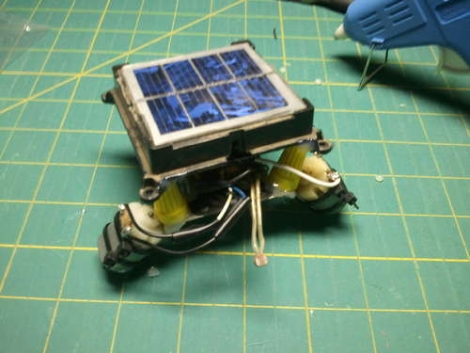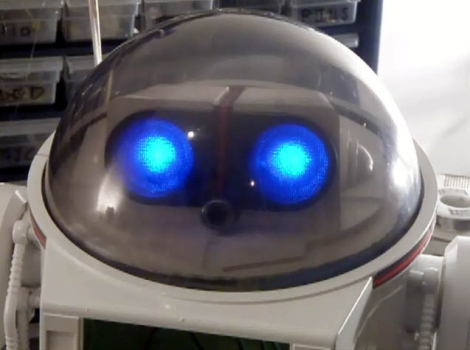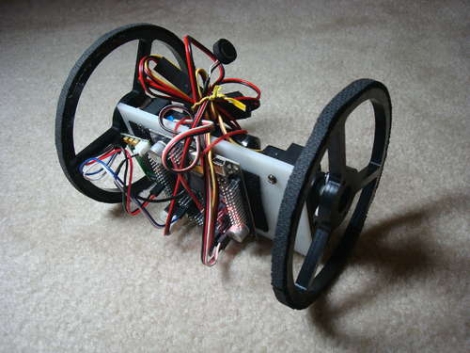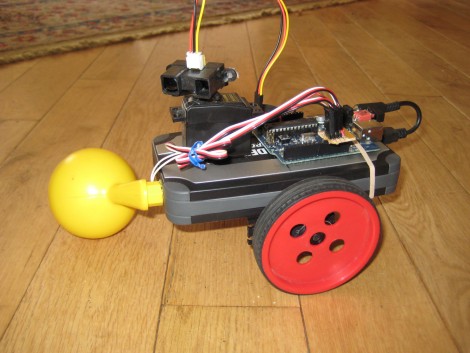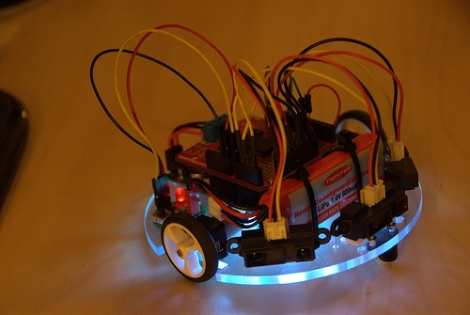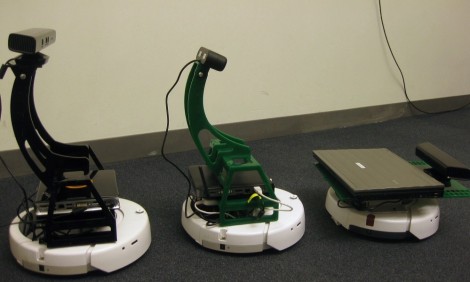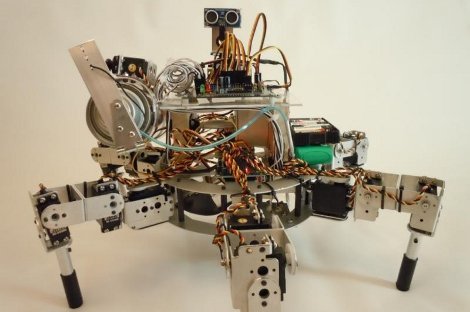
Prospero is the working prototype of an Autonomous Micro Planter, which is intended to be unleashed as a swarm. Using a Parallax propeller mounted on a Lynxmotion AH3-R hexapod body, though we have a ton of different ideas on hexapods if you find the price of the body to be out of budget.
Inputs to the machine are pretty standard robot fare like infrared, and ultrasound. Outputs on the other hand are more interesting, for example spray paint, retractable drill, seed dispenser, and of course a stack of servos.
Arming a robot with a drill and a can of spray paint sounds like a recipe for hours of fun, but it does have a job to do. Walking around, the bot stops and checks the ground below it, and if the ground is ok to seed, a small auger drill flips down from the robot’s belly. After drilling a hole, a seed is dropped, then covered over with a scoop on the back of the drill. Finally the seeded the spot is marked with white paint and the robot moves on.
Though its a prototype and not fully formed yet, its an interesting thing to see, so join us after the break for a video.

